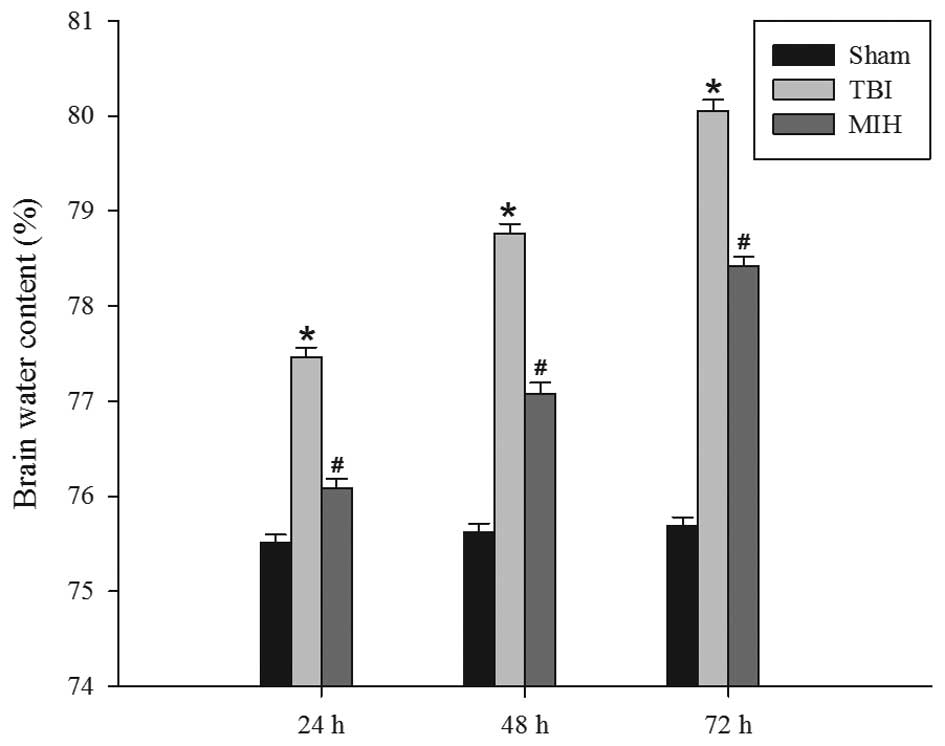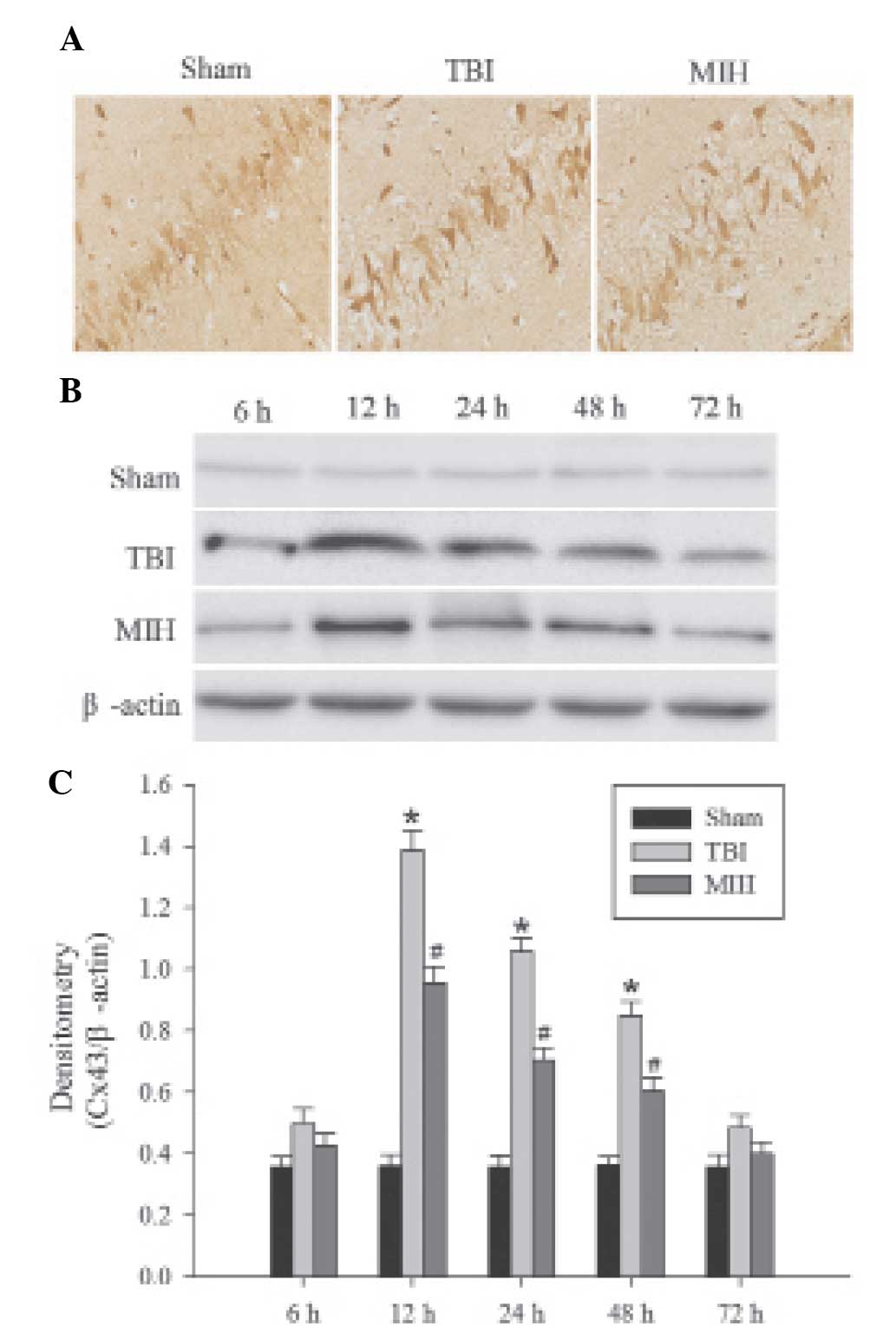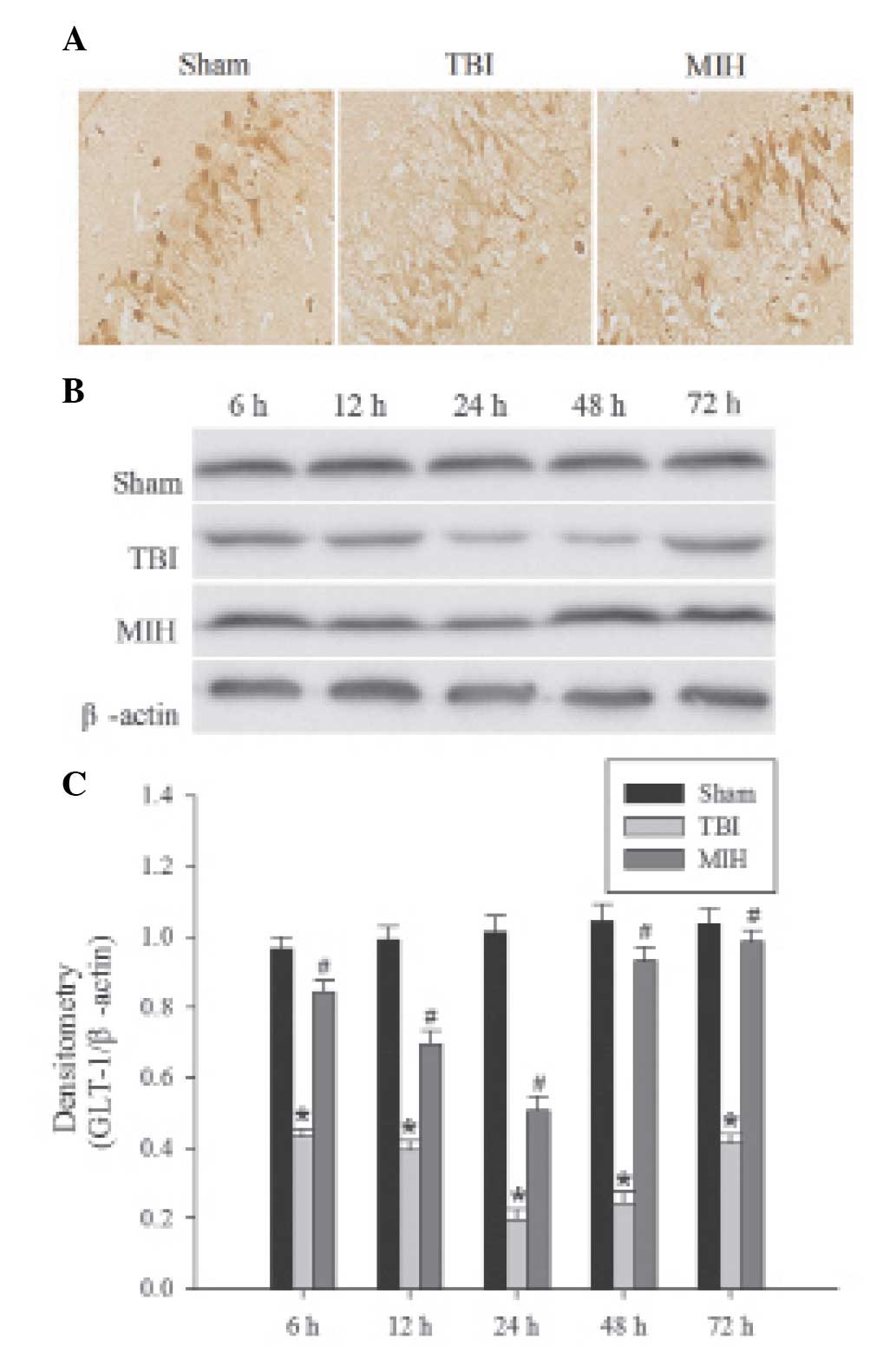|
1
|
Cheng SX, Zhang S, Sun HT and Tu Y:
Effects of mild hypothermia treatment on rat hippocampal β-amyloid
expression following traumatic brain injury. Ther Hypothermia Temp
Manag. 3:132–139. 2013. View Article : Google Scholar : PubMed/NCBI
|
|
2
|
Jia F, Mao Q, Liang YM and Jiang JY:
Effect of post-traumatic mild hypothermia on hippocampal cell death
after traumatic brain injury in rats. J Neurotrauma. 26:243–252.
2009. View Article : Google Scholar : PubMed/NCBI
|
|
3
|
Fay T: Observations on generalized
refrigeration in cases of severe cerebral trauma. Assoc Res Nerv
Ment Dis Proc. 24:611–619. 1945.
|
|
4
|
Kramer C, Freeman WD, Larson JS, et al:
Therapeutic hypothermia for severe traumatic brain injury: a
critically appraised topic. Neurologist. 18:173–177. 2012.
View Article : Google Scholar : PubMed/NCBI
|
|
5
|
Andrews PJ, Sinclair LH, Harris B, et al:
Study of therapeutic hypothermia (32 to 35°C) for intracranial
pressure reduction after traumatic brain injury (the
Eurotherm3235Trial): outcome of the pilot phase of the trial.
Trials. 14:1–8. 2013. View Article : Google Scholar
|
|
6
|
Liu L and Yenari MA: Therapeutic
hypothermia: neuroprotective mechanisms. Front Biosci. 12:816–825.
2007. View Article : Google Scholar
|
|
7
|
Feng JF, Zhang KM, Jiang JY, Gao GY, Fu XA
and Liang YM: Effect of therapeutic mild hypothermia on the
genomics of the hippocampus after moderate traumatic brain injury
in rats. Neurosurgery. 67:730–742. 2010. View Article : Google Scholar : PubMed/NCBI
|
|
8
|
Laird DW: The gap junction proteome and
its relationship to disease. Trends Cell Biol. 20:92–101. 2010.
View Article : Google Scholar
|
|
9
|
Márquez-Rosado L, Solan JL, Dunn CA,
Norris RP and Lampe PD: Connexin43 phosphorylation in brain,
cardiac, endothelial and epithelial tissues. Biochi Biophys Acta.
1818:1985–1992. 2012. View Article : Google Scholar
|
|
10
|
Mroue R, El-Sabban M and Talhouk R:
Connexins and the gap in context. Integ Biol. 3:255–266. 2011.
View Article : Google Scholar
|
|
11
|
Ongstad EL, O’Quinn MP, Ghatnekar GS, Yost
MJ and Gourdie G: A connexin43 mimetic peptide promotes
regenerative healing and improves mechanical properties in skin and
heart. Adv Wound Care (New Rochelle). 2:55–62. 2013. View Article : Google Scholar
|
|
12
|
Yu M, Zhang C, Li L, Dong S, Zhang N and
Tong X: Cx43 reverses the resistance of A549 lung adenocarcinoma
cells to cisplatin by inhibiting EMT. Oncol Rep. 31:2751–2758.
2014.PubMed/NCBI
|
|
13
|
Sun LQ, Gao JL, Cui CM, et al: Astrocytic
p-connexin43 regulates neuronal autophagy in the hippocampus
following traumatic brain injury in rats. Mol Med Rep. 9:77–82.
2014.
|
|
14
|
Ohsumi A, Nawashiro H, Otani N, Ooigawa H,
Toyooka T and Shima K: Temporal and spatial profile of
phosphorylated connexin43 after traumatic brain injury in rats. J
Neurotrauma. 27:1255–1263. 2010. View Article : Google Scholar : PubMed/NCBI
|
|
15
|
Rami A, Volkmann T and Winckler J:
Effective reduction of neuronal death by inhibiting gap junctional
intercellular communication in a rodent model of global transient
cerebral ischemia. Exp Neurol. 170:297–304. 2001. View Article : Google Scholar : PubMed/NCBI
|
|
16
|
Jiang S, Wang YQ, Xu CF, Li YN, Guo R and
Li L: Involvement of connexin43 in the infrasonic noise-induced
glutamate release by cultured astrocytes. Neurochem Res.
39:833–842. 2014. View Article : Google Scholar : PubMed/NCBI
|
|
17
|
Obrenovitch TP and Urenjak J: Is high
extracellular glutamate the key to excitotoxicity in traumatic
brain injury? J Neurotrauma. 14:677–698. 1997. View Article : Google Scholar : PubMed/NCBI
|
|
18
|
Yi JH and Hazell AS: Excitotoxic
mechanisms and the role of astrocytic glutamate transporters in
traumatic brain injury. Neurochem Int. 48:394–403. 2006. View Article : Google Scholar : PubMed/NCBI
|
|
19
|
Wang X, Ma A, Zhu W, et al: The role of
connexin 43 and hemichannels correlated with the astrocytic death
following ischemia/reperfusion insult. Cell Mol Neurobiol.
33:401–410. 2013. View Article : Google Scholar : PubMed/NCBI
|
|
20
|
Goodrich GS, Kabakov AY, Hameed MQ, Dhamne
SC, Rosenberg PA and Rotenberg A: Ceftriaxone treatment after
traumatic brain injury restores expression of the glutamate
transporter, GLT-1, reduces regional gliosis and reduces
post-traumatic seizures in the rat. J Neurotrauma. 30:1434–1441.
2013. View Article : Google Scholar : PubMed/NCBI
|
|
21
|
Marmarou A, Foda MA, van den Brink W,
Campbell J, Kita H and Demetriadou K: A new model of diffuse brain
injury in rats: Part I: Pathophysiology and biomechanics. J
Neurosurg. 80:291–300. 1994. View Article : Google Scholar : PubMed/NCBI
|
|
22
|
Truettner JS, Alonso OF, Bramlett HM and
Dietrich WD: Therapeutic hypothermia alters microRNA responses to
traumatic brain injury in rats. J Cereb Blood Flow Metab.
31:1897–1907. 2011. View Article : Google Scholar : PubMed/NCBI
|
|
23
|
Tang J, Liu J, Zhou C, et al: Mmp-9
deficiency enhances collagenase-induced intracerebral hemorrhage
and brain injury in mutant mice. J Cereb Blood Flow Metab.
24:1133–1145. 2004. View Article : Google Scholar : PubMed/NCBI
|
|
24
|
Hui-guo L, Kui L, Yan-ning Z and Yong-jian
X: Apocynin attenuate spatial learning deficits and oxidative
responses to intermittent hypoxia. Sleep Med. 11:205–212. 2010.
View Article : Google Scholar : PubMed/NCBI
|
|
25
|
Tokutomi T, Morimoto K, Miyagi T,
Yamaguchi S, Ishikawa K and Shigemori M: Optimal temperature for
the management of severe traumatic brain injury: effect of
hypothermia on intracranial pressure, systemic and intracranial
hemodynamics, and metabolism. Neurosurgery. 52:102–112. 2003.
|
|
26
|
Marion D and Bullock MR: Current and
future role of therapeutic hypothermia. J Neurotrauma. 26:455–467.
2009. View Article : Google Scholar : PubMed/NCBI
|
|
27
|
Dietrich WD, Atkins CM and Bramlett HM:
Protection in animal models of brain and spinal cord injury with
mild to moderate hypothermia. J Neurotrauma. 26:301–312. 2009.
View Article : Google Scholar : PubMed/NCBI
|
|
28
|
Obrenovitch TP and Urenjak J: Is high
extracellular glutamate the key to excitotoxicity in traumatic
brain injury? J Neurotrauma. 14:677–698. 1997. View Article : Google Scholar : PubMed/NCBI
|
|
29
|
Broessner G, Fischer M, Schubert G,
Metzler B and Schmutzhard E: Update on therapeutic temperature
management. Critical Care. 16:A12012.
|














